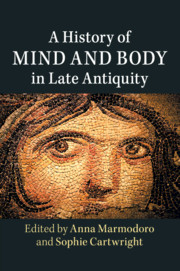Book contents
- A History of Mind and Body in Late Antiquity
- A History of Mind and Body in Late Antiquity
- Copyright page
- Contents
- Contributors
- Abbreviations
- Introduction
- Chapter 1 The Late Ancient Philosophical Scene
- Part I Mind and Body in Late Antique Pagan Philosophy
- Part II Mind and Body in Early Christian Thought
- Bibliography
- General Index
- Index of Ancient and Medieval Thinkers
- Index of Greek, Hebrew and Latin Terms
- Index of Modern Authors
- References
Bibliography
Published online by Cambridge University Press: 21 July 2018
- A History of Mind and Body in Late Antiquity
- A History of Mind and Body in Late Antiquity
- Copyright page
- Contents
- Contributors
- Abbreviations
- Introduction
- Chapter 1 The Late Ancient Philosophical Scene
- Part I Mind and Body in Late Antique Pagan Philosophy
- Part II Mind and Body in Early Christian Thought
- Bibliography
- General Index
- Index of Ancient and Medieval Thinkers
- Index of Greek, Hebrew and Latin Terms
- Index of Modern Authors
- References
Summary

- Type
- Chapter
- Information
- A History of Mind and Body in Late Antiquity , pp. 381 - 418Publisher: Cambridge University PressPrint publication year: 2018

